Apple’s unveiling of its Apple Watch smartwatch on Tuesday has thrown wearable technology under the spotlight - but Apple has joined a very busy market of useful, internet-connected watches. Here’s everything you need to know about smartwatches, and nine of the best.
Apple Watch
The long-anticipated Apple Watch is an extension of the iPhone on the wrist. It has a touchscreen display, but also what Apple is calling a “digital crown” on the side, which is a jog dial that allows users to turn it to adjust features and settings, including zooming in and out of a map, or setting the time.
Apple’s main focus is on apps, health and communications, with third-party apps from Twitter and Facebook shown off. A heart rate sensor on the back combines with movement tracking for fitness monitoring.
The Apple Watch won’t be available until Spring 2015, which means the rest of the pack has quite a head start on Apple.
Expert view: We don’t know until we get our hands on one next year.
Cost: $350 (£215) in spring 2014
The Apple Watch: light, clever, but how long does the battery last?
Apple Watch has designs on health industry – but is it good for doctors?
Apple Watch first reactions: a great bit of kit, or just plain ugly?
Motorola Moto 360

Motorola’s second smartwatch and its first using Google’s Android Wear software, the Moto 360 is the first Android smartwatch to be released with a round 1.5in screen.
It runs Google’s latest smartwatch software and connects to Android smartphones and tablets via Bluetooth, allowing notifications from apps, calls, texts and emails to pop up on the screen as small cards.
The 360 has a heart rate sensor on the back, while steps and activity are counted by an accelerometer for fitness tracking.
The interface is simple, the display attractive and the choice of watchfaces plentiful. Users can speak into their watch to search with Google or dictate messages, while Google Now presents information including aeroplane boarding cards or bus stop timetables when needed.
Users can also control their music and get turn-by-turn directions delivered to their wrist from Google Maps.
Expert view: The best looking, most comfortable smartwatch, but let down by poor battery life of less than a day.
Cost: £200 from the end of September
Motorola Moto 360 a smartwatch masquerading as a classic time piece
LG G Watch
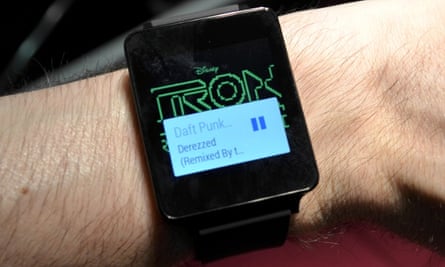
LG’s G Watch was one of the first Android Wear watches released, and like the Moto 360 connects to an Android smartphone via Bluetooth to display notifications and other information. It has a square screen, lasts about two days on a single charge and is waterproof.
The G Watch lacks a heart rate monitor, but tracks steps and calories burnt, and allows users to control music, get directions and everything else Android Wear provides.
Expert view: A good balance of battery life and notification features but the design might put people off.
Cost: £160 available now
Samsung Gear Live
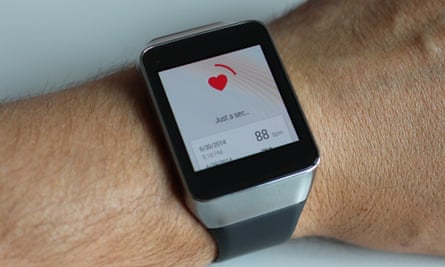
The Gear Live is Samsung’s Android Wear smartwatch, which was launched at the same time as the LG G Watch. It too has a square screen, connects to an Android smartphone via Bluetooth and displays information, notifications, direction and music track changes.
The Gear Live also has a heart rate sensor built into the back for fitness tracking and is waterproof.
Expert view: The heart rate sensor doesn’t add much, but the bright screen and comfortable fit make it a solid Android Wear watch.
Cost: £170 available now
LG G Watch R
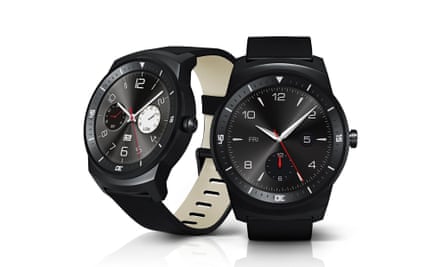
The second round Android smartwatch, the LG G Watch R is essentially the square LG G Watch above squeezed into a circular frame. It looks more like a traditional watch with a completely round 1.3in screen and has a heart rate sensor on the back, unlike its square brother.
Expert view: Similar to the LG G watch but a more attractive round design and a heart rate monitor.
Cost: around £170 expected to be released in October
LG G Watch R: the smartwatch that looks like a watch
Asus ZenWatch
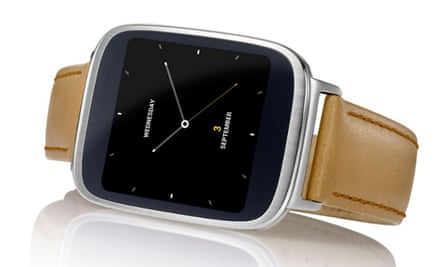
Asus’s ZenWatch is the company’s first attempt at a wearable and, like the others above, runs Google’s Android Wear. It connects to Android smartphones via Bluetooth, displays notifications and other information from the phone and tracks activity with an acelerometer.
It doesn’t have a heart rate monitor, but has a slightly curved screen and polished bezel.
Expert view: It has the same features as most other smartwatches, so only one for you if you like the big and perhaps a little over-designed look.
Cost: under £199 from in October
Asus ZenWatch will retail for ‘under £199’
Sony Smartwatch 3

The Sony Smartwatch 3 is the only Android Wear smartwatch to date that has a GPS built in meaning it can track its position for running and other fitness and navigation activities without being connected to an Android smartphone.
It will also be able to play music stored on the watch via Bluetooth headphones without a smartphone.
The Smartwatch 3 is waterproof, like the rest, with a square screen and is Sony’s fourth generation Android smartwatch.
Expert view: Promises a two-day battery life and more Android Wear features - including built-in GPS, which makes it great for fitness apps - than any other smartwatch.
Cost: €229 (£182) in October
Sony joins Google’s Android Wear initiative with the GPS-equipped Smartwatch 3
Samsung Gear S
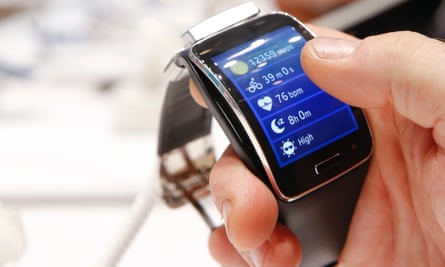
Samsung’s latest smartwatch is the company’s sixth smartwatch in under a year, but is the only one so far that can be used completely independently of a smartphone.
The Gear S has Bluetooth to connect to and sync with a Samsung Android smartphone, but is also a complete mobile phone in its own right capable of making calls, sending messages and connecting to the internet over Wi-Fi or 3G connection, complete with separate mobile phone contract.
It runs Samsung’s Tizen software, which means Android apps are not compatible and has a 2in curved screen with a heart rate sensor on the back. Users can place calls by directly speaking into the watch, just like Dick Tracy.
Expert view: The only option for those who want the entire 3G-enabled connectivity of a mobile phone, on their wrist.
Cost: Not yet announced
Samsung’s new Gear S smartwatch: just don’t mention Dick Tracy
Pebble
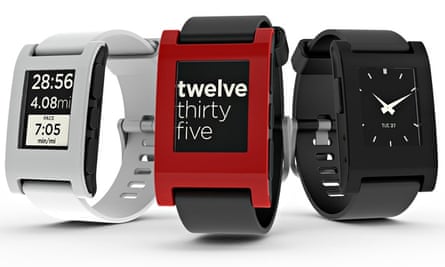
The Pebble was one of the first smartwatches to work with both the iPhone and Android. It was successfully crowd-funded with $10.3 million through Kickstarter in April 2012, before being released in 2013.
It has a low power e-ink screen that stays on all the time but gives the Pebble a battery life of seven days. It is waterproof, supports third party apps, and is available in a range of colours. An updated version with a stainless steel case was released this year.
The Pebble displays alerts from the connected smartphone, but has no touchscreen with tradition buttons allowing users to switch between notifications and the time.
Expert view: Pebble gets the basics right, lasts longer than any smartphone on a single charge, but is limited in functionality without a touchscreen
Cost: from $150
The others
There are many, many more smartwatches from various different companies offering similar functionality like notifications on the wrist including the Samsung Gear Fit and Gear 2 the Withings Activité, which is an alternative vision of a smartwatch and packs a fitness tracker directly into a traditional analogue watch.
How the Apple Watch will stack up against the competition is unknown. Most of the current crop of smartwatches do not work with Apple’s iPhone, giving the company a captive market within iPhone buyers.
Given smartwatches have struggled to reach beyond the geek elite, Apple and others might struggle to convince the general consumer that they actually need a smartwatch.
Two months with Android Wear: the best smartwatches yet
Android Wear: the nine best free apps for Google’s smartwatch
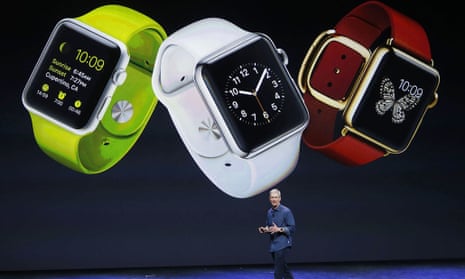
Comments (…)
Sign in or create your Guardian account to join the discussion